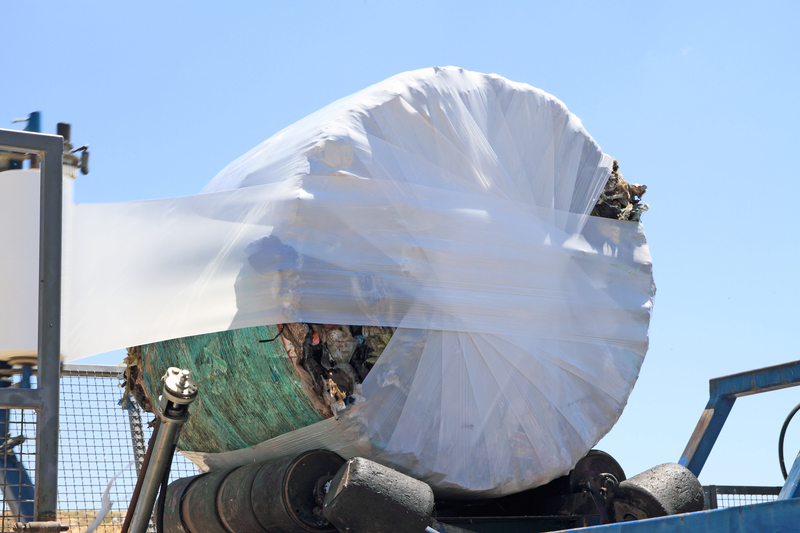Simple and Safe Procedures for Throwing Away Used PPE
The importance of personal protective equipment (PPE) in safeguarding individuals from potential hazards has never been more highlighted than in recent years. Whether in healthcare settings, industrial environments, or daily life, PPE such as masks, gloves, gowns, and face shields are crucial for preventing the spread of diseases and reducing the risk of exposure to harmful substances. However, once used, it is equally vital to ensure the proper disposal of used PPE to protect both people and the environment from contamination.

Why Safe PPE Disposal Matters
Improperly discarded PPE can be a source of infection and environmental pollution. Used PPE items may carry pathogens, hazardous chemicals, or other contaminants that pose health risks to waste handlers and the community. Additionally, items like disposable masks and gloves contribute significantly to plastic waste in landfills and oceans.
Therefore, understanding simple and safe PPE disposal procedures is essential for everyone, from healthcare workers to the general public. This article outlines easy-to-follow, effective methods to discard used PPE correctly, ensuring both personal safety and environmental responsibility.
Understanding Different Types of Used PPE
Before considering safe disposal procedures for used personal protective equipment, it's essential to identify the different types of PPE commonly used:
- Face masks: Surgical masks, N95 respirators, cloth masks
- Gloves: Latex, nitrile, vinyl, disposable or reusable types
- Gowns and aprons: Often made of plastic or fabric, these protect clothing and skin
- Face shields and goggles: Protect facial area and eyes from splashes
- Shoe covers and caps: Used mainly in healthcare and industrial settings
Each type of protective gear requires specific handling to ensure it does not become a source of cross-contamination or environmental harm.
Step-by-Step Safe Disposal Methods for Used PPE
Follow these simple PPE disposal procedures to maximize safety and minimize risks:
1. Remove PPE Carefully
Proper removal of used PPE is the first and most important step. This process, known as "doffing," should minimize direct contact with contaminated surfaces.
- Gloves: Pinch the outside of one glove near the wrist and peel it away from the hand, turning it inside out. Hold the removed glove in the gloved hand. Slide fingers under the wrist of the remaining glove, peel it off inside out, and encase the first glove within.
- Masks: Remove by holding the ear loops or ties without touching the front of the mask. Do not reuse disposable masks.
- Goggles or face shields: Remove by the bands or arms. Avoid touching the front surface.
- Gowns and aprons: Unfasten ties, peeling away from neck and shoulders. Turn the item inside out when removing and avoid contact with outer surfaces.
*Always wash your hands thoroughly after removing any PPE.*
2. Categorizing Used PPE for Disposal
Proper sorting of used PPE is vital. PPE from healthcare facilities, quarantine zones, or known contaminated areas falls into biohazardous waste, necessitating specialized handling. Household or non-infectious workplace PPE should still be treated as potentially infectious.
- Biohazardous waste: PPE used in hospitals or with known infectious cases. These must go in designated biohazard bins.
- General waste: PPE used for routine tasks or personal use. Dispose in sealed plastic bags and regular garbage bins unless local authorities advise otherwise.
3. Using the Right Containers and Bags
Simple procedures for discarding PPE safely include using specific containers to avoid contamination:
- Biohazard bags: In healthcare or high-risk situations, discard PPE in red or yellow bags clearly marked as "Biohazard." These are picked up by specialized medical waste contractors.
- Double-bagging: For used PPE at home or in low-risk environments, place items in a dedicated garbage bag, tie securely, and then place inside a second bag. This extra layer reduces the risk of leaks or exposure for sanitation workers.
- Dedicated PPE bins: If available, use bins specifically labeled for PPE. Some communities provide these at public places.
4. Seal and Label
For optimal safety, always seal the used PPE disposal bag tightly. If the PPE comes from someone ill, label the bag as "contaminated" so waste handlers exercise caution.
- Tie bags tightly without compressing the contents.
- If concerned about leaks, consider lining bags with absorbent material.
5. Community and Curbside Disposal
Follow local guidelines for discarding used PPE. Many municipalities have set rules for household PPE. In general:
- Dispose used PPE with household waste, unless instructed to segregate.
- Do not place contaminated PPE into recycling bins--these items are not recyclable.
- Place the sealed PPE bag in your curbside garbage bin, not public spaces or open landfills.
6. Cleaning and Sanitizing Hands
After touching used PPE and disposal bags, wash your hands thoroughly with soap and water for at least 20 seconds. Use alcohol-based hand sanitizer if water is not available. Disinfect all surfaces that might have come in contact with used PPE.
Environmental Considerations in PPE Disposal
Widespread PPE usage during pandemics has contributed to plastic pollution. Discarded masks and gloves littering streets and waterways highlight the need for responsible waste management.
- Do not litter PPE: Never discard masks, gloves, or other protective equipment on the ground or in bodies of water. This increases environmental hazards and can harm wildlife.
- Explore reusables: Where possible, use washable masks and PPE that can be sanitized and reused, reducing overall waste.
- Support recycling programs: Some specialized recycling programs accept used PPE (such as the TerraCycle program for masks and gloves). Check if such initiatives exist in your area.
How to Reduce PPE Waste
- Choose cloth masks for general use, ensuring they are washed after each use.
- Minimize single-use items unless required for safety or hygiene.
- Buy PPE in bulk to reduce packaging waste.
- Educate others about safe and responsible PPE disposal methods.
Special Handling for Healthcare and Workplace Settings
In hospitals, clinics, laboratories, or other high-risk environments, strict PPE disposal protocols must be followed:
- Use color-coded containers: For example, red bags for infectious waste, yellow for clinical waste.
- Sharps containers: Any sharp PPE like needles or broken face shields should go in puncture-proof "sharps" boxes.
- Onsite incineration: High-risk PPE may require incineration or treatment at designated plants to ensure complete destruction of pathogens.
- Record-keeping: Maintain documentation of waste volumes for tracking and regulatory compliance.
*Employers must train staff in correct PPE doffing and disposal procedures to safeguard sanitation workers, healthcare teams, and the wider public.*
Common Mistakes to Avoid When Disposing Used PPE
Despite good intentions, many people inadvertently make mistakes that could pose risks. To optimize simple and safe PPE disposal, always avoid:
- Throwing PPE onto the ground or in public spaces. Littered gear often ends up in storm drains and natural areas.
- Burning PPE at home. Home burning releases toxic fumes and is environmentally dangerous.
- Reusing single-use PPE. Disposable items are not designed for repeated use and can harbor viruses or bacteria.
- Flushing PPE down toilets or sinks. This clogs plumbing and pollutes waterways. Always use appropriate waste bins.
- Mixing contaminated PPE with recyclables, posing risks to recycling center staff and equipment.
Legal Regulations and Guidelines on PPE Disposal
Many governments and agencies have issued detailed recommendations to guide the safe disposal of PPE waste:
- CDC (Centers for Disease Control and Prevention): Stresses the importance of proper doffing, bagging, and waste management protocols.
- OSHA (Occupational Safety and Health Administration): Mandates that contaminated PPE be disposed of in accordance with hazard classification.
- Local municipalities: Often publish guidelines for household PPE disposal, accessible from city or county websites.
Always follow the latest advice from your local health authorities and waste services for the most up-to-date disposal procedures.

Creative Solutions: PPE Waste Innovations
Innovative organizations and communities are exploring new methods for PPE waste management. For instance:
- Recycling programs: Innovations enable some single-use masks and gowns to be processed into construction materials or energy.
- Biodegradable PPE: Emerging eco-friendly PPE, made from compostable materials, promises to reduce environmental impact.
- Take-back schemes: Some pharmacies and retailers now offer special bins for used masks and gloves, ensuring professional-grade disposal.
By supporting these sustainable PPE disposal options, individuals and businesses can reduce the overall environmental footprint while maintaining hygiene protocols.
Conclusion: Make Simple and Safe PPE Disposal a Habit
Properly disposing of used personal protective equipment is crucial in preventing the spread of disease, protecting community members, and safeguarding the environment. By following these simple and safe procedures for throwing away used PPE, everyone can contribute to a cleaner, safer world.
Key takeaways:
- Always remove PPE carefully and wash hands after handling.
- Use the correct disposal containers and never mix PPE with recycling streams.
- Double-bag used PPE to prevent leaks and label if contaminated.
- Follow community guidelines and look for innovative disposal or recycling programs.
- Educate others about the importance of responsible PPE waste management.
Remember, every safe disposal of a mask, glove, or shield helps break the chain of infection--and protects people and the planet.
Start making safe PPE disposal an everyday habit--your health and the environment depend on it!